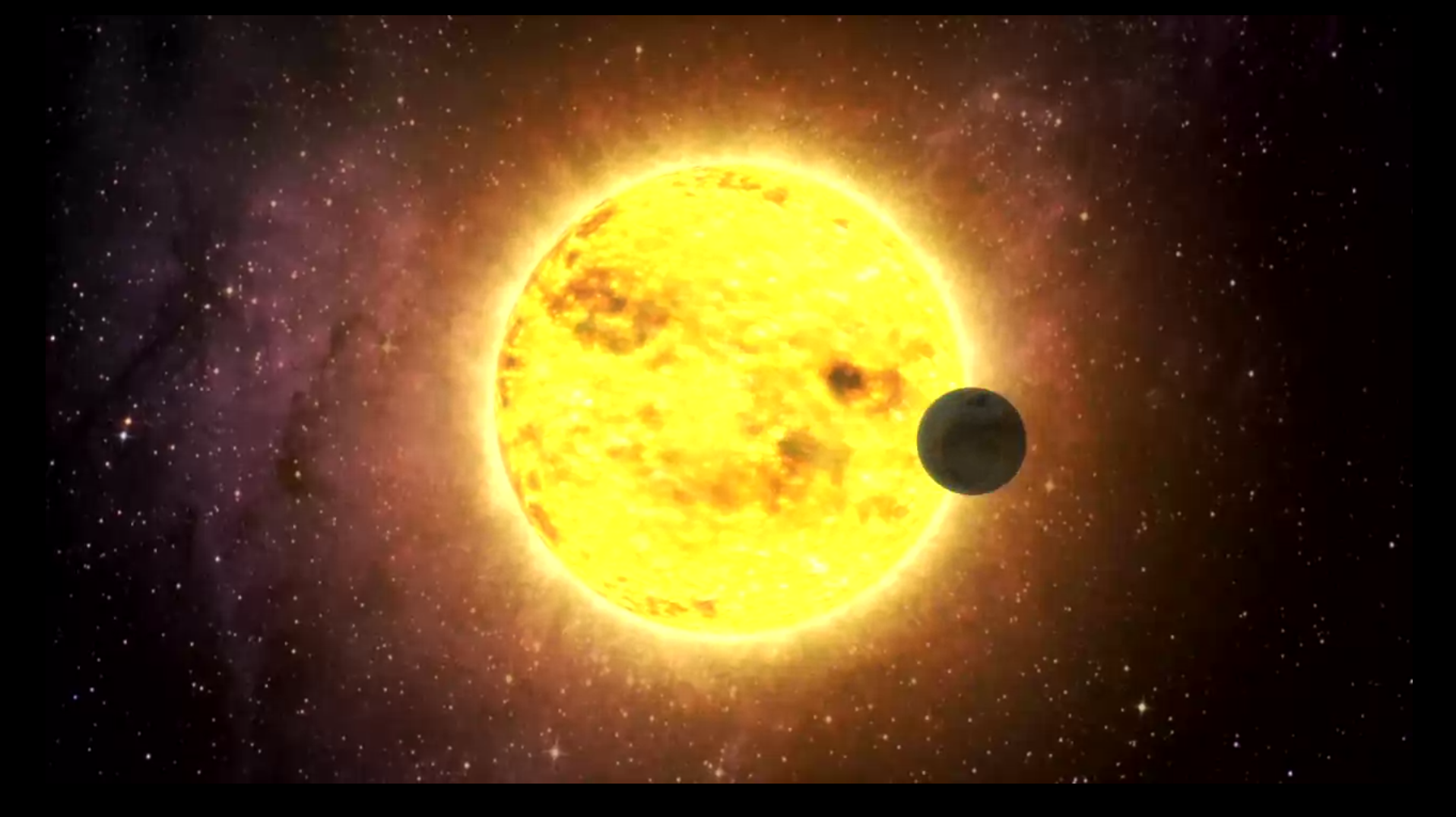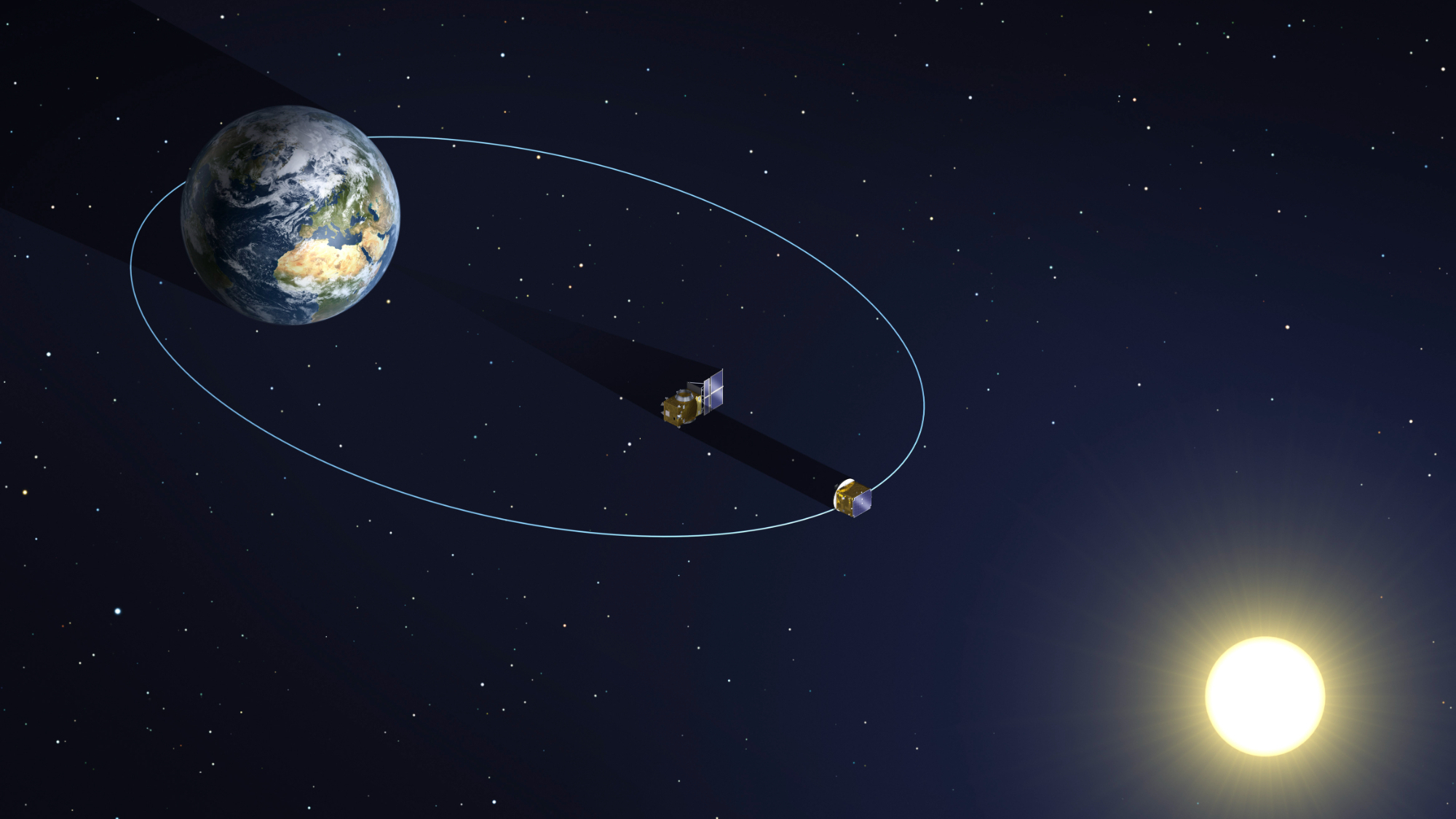Alien Planets Can Reveal Clues to Their Stars' Insides: Here's How

Distant planets tell all: A new analysis uses alien worlds' orbital treks to peek inside their stars.
NASA's ever-watchful Kepler space telescope has identified thousands of exoplanets by noting the tiny brightness dips caused when these worlds "transit," or cross the face of, their host stars. The length between dimmings tells scientists how long the planet takes to orbit — how long its year is — and the level of dimming shows how much smaller the planet is than the star.
And now, the speed of the planet's passing can also divine the star's density. [Wildest Alien Planet Discoveries of 2016]
"It's really weird that a planet that's orbiting far away from the star can tell us anything about the star's interior — I think that's really bizarre but cool," said Emily Sandford, an astronomer at Columbia University in New York and lead author on the new work.
"Basically, by measuring very precisely the shape of those dimmings, the amount of light that's missing over time when a planet passes in front, you can measure the density of the star the planet's orbiting," she told Space.com.
Using a method first derived by astrophysicsts Sara Seager and Gabriela Mallen-Ornelas in 2003, Sandford and co-author David Kipping, also of Columbia, analyzed data on 66 Kepler stars to determine their densities. Their precision rivalled that of asteroseismology, a technique used on bright stars that uses oscillations in their shine to reconstruct their interior properties. While asteroseismology requires very precise brightness measurements, Sandford said, the new calculation needs less pristine data.
Essentially, the process works because how long a planet spends in front of its star is tied to the star's density. Planets that are far away from their stars spend less time in front of them — imagine a planet right at the star's surface, which would spend half of its orbit in front of it, versus one that is very far away, and only crosses in front for a quick part of its orbit, Sandford said. But at the same time, a planet has to move at a certain speed to maintain a steady orbit based on how massive the star is — if the planet is going too slowly, it will fall into the star, and if it's going too fast, it will fly away.
Get the Space.com Newsletter
Breaking space news, the latest updates on rocket launches, skywatching events and more!
"We can then use that knowledge of [proportionally] how far the planet is from its star, combined with the duration of the transit, to solve for the stellar density," Sandford said. "If a planet is far away and yet takes a long time to transit, we know that the star must be big, puffy, and low-density; if a planet is close-in and yet transits quickly, we know that the star must be small, compact, and high-density."
In other words, the denser a star is — the more massive it is compared to its radius — the less time the planet spends in front of it.
Treasure trove
While researchers already knew about this relationship between transiting planets and their parent stars' densities, it's only since Kepler's launch in 2009 that more than a handful of transiting planets have been available for analysis, according to Sandford.
"We have this enormous treasure trove of data, and we can start to apply some of these ideas that people thought of way in advance before the data was ready," Sandford said. "That's what we've done here." [How Do You Spot an Alien Planet from Earth? (Infographic)]
This method requires that the researchers know the planet's orbit well, or that they can predict that it's circular. (Circular orbits tend to be common in systems with multiple planets.) It also requires researchers to know the planet's full orbit length — so it must have passed in front of the star more than once.
Once those criteria are established, researchers can use these calculations in two key ways: to determine if a transit is really caused by a planet or if it's a false positive, and to analyze the other planets in a multiplanet system.
That false-positive case was one of the uses Seager had in mind when the equation was first developed, she told Space.com: "If you get the stellar density from the light curve alone, and then if you get the stellar density because you already know something about its mass and size … and if those densities don't match up, the thing you're looking at is not a planet," said Seager, who was not involved in the new study. "It's a blended object; it's a false positive; it's something else."
"All the applications are exciting, whether you want to just measure the densities of the set of stars, or whether you're using it as a kind of comparison tool," she added.
During its primary mission, Kepler looked at the same set of stars for four years, but future exoplanet hunters such as NASA's Transiting Exoplanet Survey Satellite (TESS), set to launch in 2018, will spend a much shorter time on each part of the sky — just a month or so. In systems with multiple planets, if one orbits quickly enough for researchers to see more than one full orbit, that planet could act as an "anchor" to pin down the star's density, letting researchers learn about the orbits of the other planets, too.
"There's going to be a lot of habitable-zone planets that fall out in that window where their orbital period is longer than a month," Sandford said. "If we only see one transit, if we can't measure the period directly, it might be a very, very faraway planet, in which case it's too cold to have liquid water, or it might fall right in the middle of the habitable zone."
"If we can use our method to constrain the star, and from there to constrain the outer planet's period, that could be really interesting for prioritizing certain planets for follow-up if we know that they're likely to be habitable-zone, potentially the right temperature range for liquid water, type planets," she added.
Know the planet, know the star
According to Vincent Van Eylen, a researcher at Leiden University in the Netherlands who is uninvolved with the study, there's a saying that goes "Know thy star, know thy planet." Often, researchers use what they can glean about stars to identify what their planets might be made of and what the orbits look like.
Van Eylen's own research uses stars' densities and the durations of transits to learn about the planets' orbits — a reversal of Sandford's calculations.
"We don't know enough about stars, and everything we learn about planets somehow is indirect information that's related to stars," Van Eylen said. "In that way, it's kind of a sweet result that they can turn things around and actually learn about the planets, and thereby learn about the stars."
The new work has been accepted for publication in The Astronomical Journal and is available on ArXiv.org.
Email Sarah Lewin at slewin@space.com or follow her @SarahExplains. Follow us @Spacedotcom, Facebook and Google+. Original article on Space.com.
Join our Space Forums to keep talking space on the latest missions, night sky and more! And if you have a news tip, correction or comment, let us know at: community@space.com.

Sarah Lewin started writing for Space.com in June of 2015 as a Staff Writer and became Associate Editor in 2019 . Her work has been featured by Scientific American, IEEE Spectrum, Quanta Magazine, Wired, The Scientist, Science Friday and WGBH's Inside NOVA. Sarah has an MA from NYU's Science, Health and Environmental Reporting Program and an AB in mathematics from Brown University. When not writing, reading or thinking about space, Sarah enjoys musical theatre and mathematical papercraft. She is currently Assistant News Editor at Scientific American. You can follow her on Twitter @SarahExplains.
